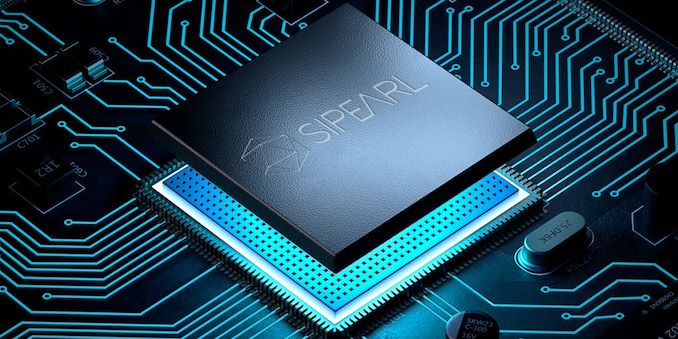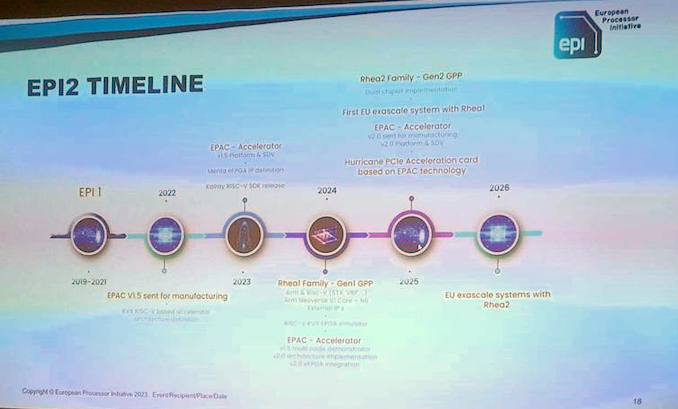SiPearl's Rhea-2 CPU Added to Roadmap: Second-Gen European CPU for HPC
by Anton Shilov on March 8, 2024 5:00 PM EST
SiPearl, a processor designer supported by the European Processor Initiative, is about to start shipments of its very first Rhea processor for high-performance computing workloads. But the company is already working on its successor currently known as Rhea-2, which is set to arrive sometimes in 2026 in Exascale supercomputers.
SiPearl's Rhea-1 datacenter-grade system-on-chip packs 72 off-the-shelf Arm Neoverse V1 cores designed for HPC and connected using a mesh network. The CPU has an hybrid memory subsystem that supports both HBM2E and DDR5 memory to get both high memory bandwidth and decent memory capacity as well as supports PCIe interconnects with the CXL protocol on top. The CPU was designed by a contract chip designer and is made by TSMC on its N6 (6 nm-class) process technology.
The original Rhea is to a large degree a product aimed to prove that SiPearl, a European company, can deliver a datacenter-grade processor. This CPU now powers Jupiter, Europe's first exascale system that uses nodes powered by four Rhea CPUs and NVIDIA's H200 AI and HPC GPUs. Given that Rhea is SiPearl's first processor, the project can be considered as fruitful.
With its 2nd generation Rhea processors, SiPearl will have to develop something that is considerably more competitive. This is perhaps why Rhea-2 will use a dual-chiplet implementation. Such a design will enable SiPearl to pack more processing cores and therefore offer higher performance. Of course, it remains to be seen how many cores SiPearl plans to integrate into Rhea 2, but at least the CPU company is set to adopt the same design methodologies as AMD and Intel.
Given the timing for SiPearl's Rhea 2 and the company's natural with to preserve software compatibility with Rhea 1, it is reasonable to expect the processor to adopt Arm's Neoverse V3 cores for its second processor. Arm's Neoverse V3 offer quite a significant uplift compared to Neoverse V2 (and V1) and can scale to up to 128 cores per socket, which should be quite decent for HPC applications in 2025 – 2026.
While SiPearl will continue developing CPUs, it remains to be seen whether EPI will manage to deliver AI and HPC accelerators that are competitive against those from NVIDIA, AMD, and Intel.
Source: HPCWire











2 Comments
View All Comments
Arnulf - Saturday, March 9, 2024 - link
Typo: "sysatem".72 Neoverse V1 cores is ~ about Graviton3 class of CPU? Reply
mode_13h - Monday, March 11, 2024 - link
Graviton 3 has 64 cores and runs them at a rather modest clock speed (2.6 GHz?). It supposedly runs in a power budget of just 100 W. Also, I believe it's made on TSMC N5, whereas this is made on N6.Anyhow, yes, along with its HBM, this seems like a turbo-charged version of the 2-year-old Graviton 3. It seems they're looking to the H200's to provide most of the compute horsepower. Reply